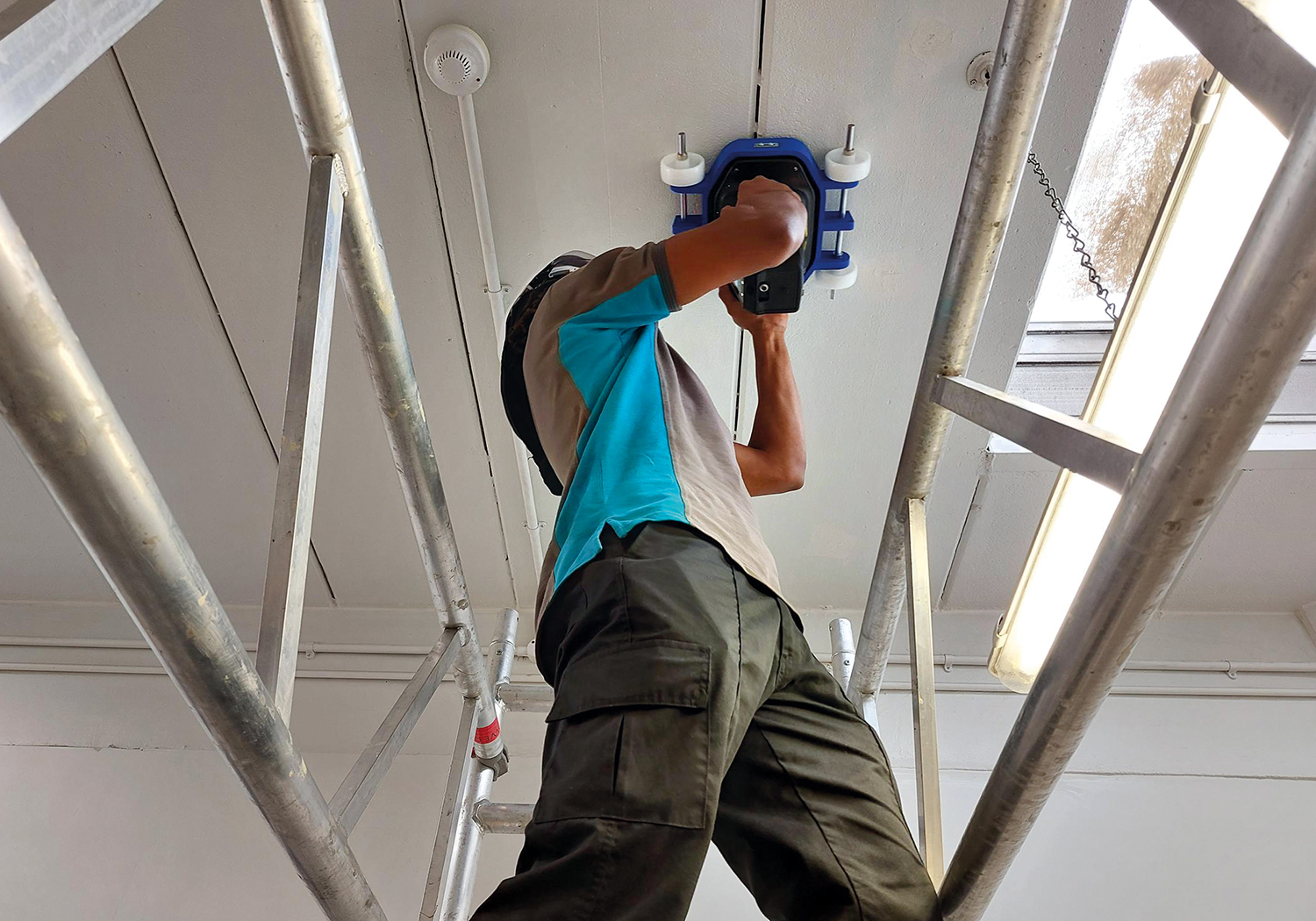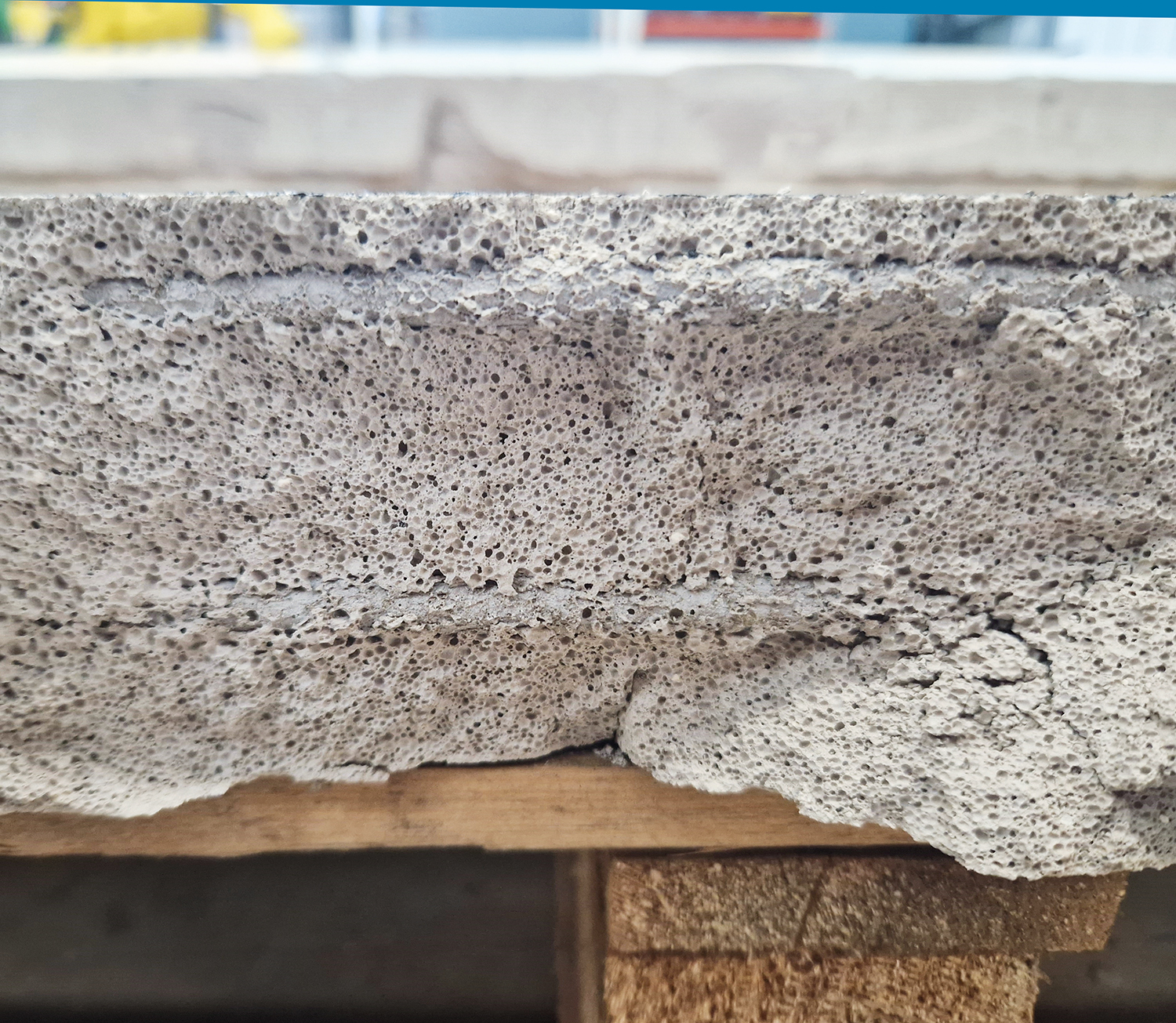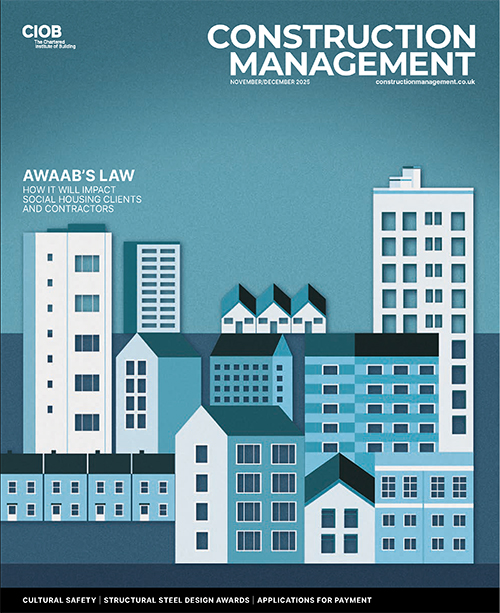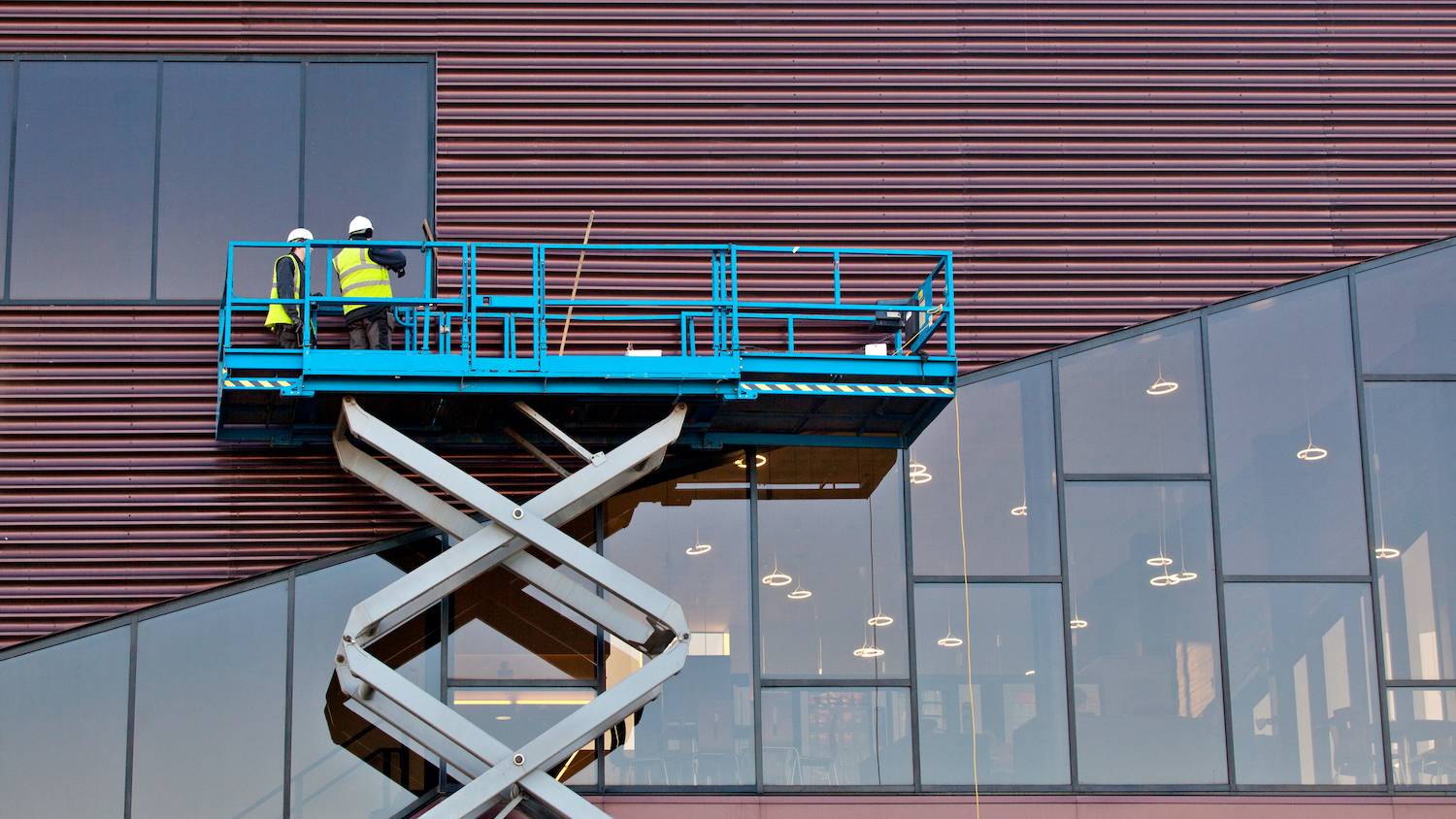
The Manufacturing Technology Centre (MTC) has published a ‘playbook’ for managing reinforced autoclaved aerated concrete (RAAC). Steve Nesbitt picks out the need-to-knows.
1. Identification and assessment
One of the primary challenges in managing RAAC is accurately identifying and assessing its presence and condition in buildings. But traditional detection methods, such as drilling into the material, are invasive and can be damaging, making them less desirable for ongoing maintenance and inspection.
The RAAC Playbook therefore explores alternative methods such as advanced non-destructive testing, including ground-penetrating radar and ultrasonic testing. These methods provide accurate assessments without causing damage to the structure or compromising the building’s structural integrity.
So far, these techniques have been successfully implemented in various public buildings, including schools and hospitals, to detect the presence of RAAC and evaluate its condition.
Onsite trials using spot measurement ultrasonic testing have been able to further validate estimated results found using contact ultrasonic array NDT (non-destructive testing) equipment in lab trials. MTC is also working on the development of a protocol to assess RAAC where coatings, plasterboards or asbestos are present.
2. Understanding RAAC’s properties and condition
Once you’ve detected RAAC, it’s crucial to understand its properties. While the presence of RAAC does not necessarily imply poor quality or safety concerns, it’s important to note its condition over time.
RAAC is lightweight and has good thermal insulation, but it is porous. This makes it susceptible to water ingress, which can lead to the potential corrosion of the steel reinforcements and deterioration over time. Understanding these technical properties and their impact on structural integrity is vital for effective management. If not properly addressed, the deterioration of RAAC can lead to significant structural issues.

What is RAAC?
RAAC is the reinforced version of autoclaved aerated concrete (AAC). The lightweight cementitious material is ‘bubbly’ in appearance and typically reinforced by steel bars or mesh to enhance its structural strength.
RAAC planks were widely used in construction across the UK from the 1950s until the mid-1990s in roofs, floors and walls of buildings such as schools, hospitals and housing. RAAC manufacturing is believed to have ended in 1982 in the UK.
Image: RAAC plank showing ineffective bonding
The RAAC Playbook provides a detailed analysis of RAAC’s technical properties including its composition, load-bearing capacity and factors that influence its degradation. This information is essential for making informed decisions about ongoing assessment, maintenance and remediation.
Research conducted by Loughborough University, Sweco, CPT, IAconnects and Lucideon highlighted the shear failure of RAAC planks during flexural tests. This research has been instrumental in understanding RAAC’s limitations and vulnerabilities, leading to more targeted remediation strategies.
3. Remediation strategies
Dealing with deteriorating RAAC roof planks presents a significant challenge. What’s more, there is no standardised methodology when it comes to remediating RAAC planks.
The Playbook outlines various remediation strategies, including repair, reinforcement and replacement options, designed to ensure safety and structural integrity while minimising disruption and cost.
These options for dealing with RAAC have considered a broad range of complexities associated with the installation and accessibility of RAAC, such as suspended ceilings, coating materials and different structural systems, such as reinforced
concrete and steel frames.
Leighton Hospital at Crewe, operated by the Mid Cheshire Hospitals NHS Foundation Trust, provides an example of a remediation strategy. In easily accessible areas, plank reinforcements were installed to support the RAAC from underneath, but in areas with compromised access Unistrut pieces were used as a mitigation strategy while a permanent solution is developed.
4. Industry collaboration
The lack of a standardised approach for managing RAAC can lead to varying levels of safety and efficacy. Without a unified method, there is a risk of inconsistent inspections, missed detections and ineffective repairs, increasing costs and potential safety hazards.
Industry collaboration is therefore crucial. By consolidating shared knowledge and resources, the industry can effectively address RAAC-related challenges. The RAAC Playbook is intended to be the vehicle for aggregating such knowledge and sharing best practice and lessons learned.
To initiate a collaborative effort, the MTC, Construction Leadership Council and other industry groups created the first edition of the Playbook, to promote the development and adoption of best practices and standardised approaches, providing a robust framework for managing RAAC.
5. Future research and training
Continuous research and training are essential for staying up to date with the latest developments and best practices in managing RAAC. Without ongoing education, construction professionals will be unable to implement the most effective strategies and innovations.
Within the Playbook you can find initiatives for ongoing research and the development of training programmes to support construction professionals in managing RAAC effectively. One notable initiative is the RAAC Impact Programme, funded by Innovate UK. This supported the first consolidation of research and training efforts aimed at enhancing the understanding and management of RAAC. l
Steve Nesbitt is chief technologist for the built environment at MTC.
Further reading
- The RAAC Playbook, Manufacturing Technology Centre (MTC)
- Reinforced Autoclaved Aerated Concrete (RAAC) Investigation and Assessment – Further Guidance, The Institution of Industrial Engineers (iStructE)
- Information and FAQs on reinforced autoclaved aerated concrete (RAAC), Construction Leadership Council (CLC)
- Reinforced Autoclaved Aerated Concrete (RAAC): Identification Guidance, Department for Education
- The Construction Playbook, HM Government











